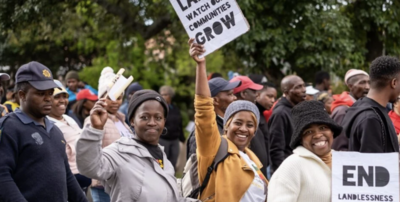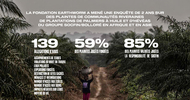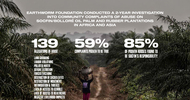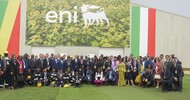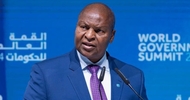United Nations Asian & Pacific Centre for Argicultural Engineering and Machinery | 17 April 2009 | excerpt
Dr. Amitava Mukherjee
Several countries like China (which has 7 per cent of world’s arable land but feeds 20 per cent of its population), Republic of Korea and a number of Gulf countries who do not have enough arable land to produce enough food have entered into long term food purchase agreements, land leases or land purchases in countries with surplus land, such as Indonesia and Madagascar. “China now is negotiating deals….. to buy more than 2 million hectares of land in countries as far flung as Mexico, Tanzania, and Australia. The United Arab Emirates is seeking some 800,000 hectares in Pakistan alone, while Saudi Arabia is negotiating for 1.6 million hectares in Indonesia”.* Often these agreements or purchases are, not by Governments, but by companies, like in case of a South Korean Company buying land in Madagascar or Gulf Countries buying such lands in Indonesia. Such purchases displace small and marginal farmers and have the potential of rendering small and marginal farmers into landless agricultural labourers as well as germane to social problems in the countries where land is purchased.
There is a need to remedy the situation by allowing countries which do not have access to arable land to guarantee food security of its people by an “Exchange Agreement”. The countries which need to jack up their food availability would bring into the host country, capital, infrastructure, agricultural technicians and
cutting edge level technology in agricultural engineering to produce much more food in the host countries than they could do. The donor country in return will be assured a supply of food equivalent to an agreed proportion (say half) of the increases in food production caused by injection of “new men, material, capital and technology”, during the payback period and will have priority in buying food after the payback period is over. Countries that lack the capability of negotiating these complex and innovative exchanges need to get assistance from international agencies like FAO, IFAD and UNESCAP to develop these capabilities pretty much in line with what some of these agencies did in building up national capacities for negotiating WTO Accession. This will of course be contingent upon developed country agricultural trade liberalization and expansion food aid in cash (to be used to purchase food in developing countries) thus investing in the agricultural sectors of developing countries at the same time.
* David Montero (2008) “Wealthy Countries seek land in Cambodia, Madagascar and Brazil”, The Christian Science Monitor, http://www.csmonitor.com/2008/1222/p01s06-wosc.html.
Dr. Amitava Mukherjee
Several countries like China (which has 7 per cent of world’s arable land but feeds 20 per cent of its population), Republic of Korea and a number of Gulf countries who do not have enough arable land to produce enough food have entered into long term food purchase agreements, land leases or land purchases in countries with surplus land, such as Indonesia and Madagascar. “China now is negotiating deals….. to buy more than 2 million hectares of land in countries as far flung as Mexico, Tanzania, and Australia. The United Arab Emirates is seeking some 800,000 hectares in Pakistan alone, while Saudi Arabia is negotiating for 1.6 million hectares in Indonesia”.* Often these agreements or purchases are, not by Governments, but by companies, like in case of a South Korean Company buying land in Madagascar or Gulf Countries buying such lands in Indonesia. Such purchases displace small and marginal farmers and have the potential of rendering small and marginal farmers into landless agricultural labourers as well as germane to social problems in the countries where land is purchased.
There is a need to remedy the situation by allowing countries which do not have access to arable land to guarantee food security of its people by an “Exchange Agreement”. The countries which need to jack up their food availability would bring into the host country, capital, infrastructure, agricultural technicians and
cutting edge level technology in agricultural engineering to produce much more food in the host countries than they could do. The donor country in return will be assured a supply of food equivalent to an agreed proportion (say half) of the increases in food production caused by injection of “new men, material, capital and technology”, during the payback period and will have priority in buying food after the payback period is over. Countries that lack the capability of negotiating these complex and innovative exchanges need to get assistance from international agencies like FAO, IFAD and UNESCAP to develop these capabilities pretty much in line with what some of these agencies did in building up national capacities for negotiating WTO Accession. This will of course be contingent upon developed country agricultural trade liberalization and expansion food aid in cash (to be used to purchase food in developing countries) thus investing in the agricultural sectors of developing countries at the same time.
* David Montero (2008) “Wealthy Countries seek land in Cambodia, Madagascar and Brazil”, The Christian Science Monitor, http://www.csmonitor.com/2008/1222/p01s06-wosc.html.


